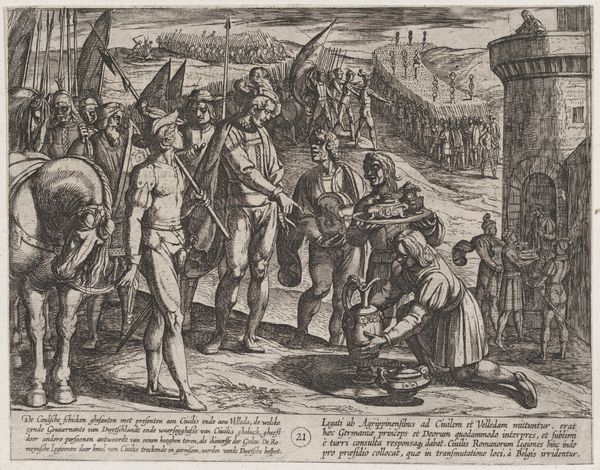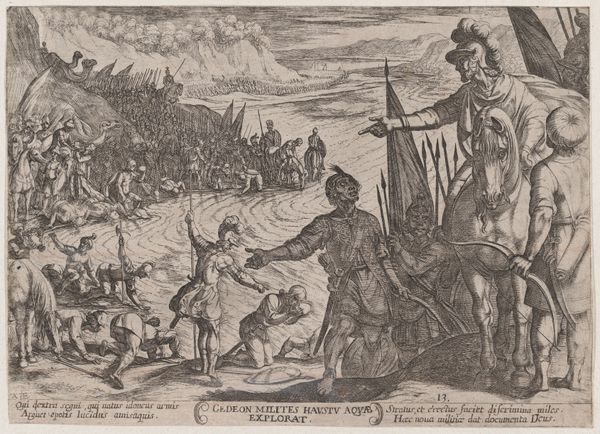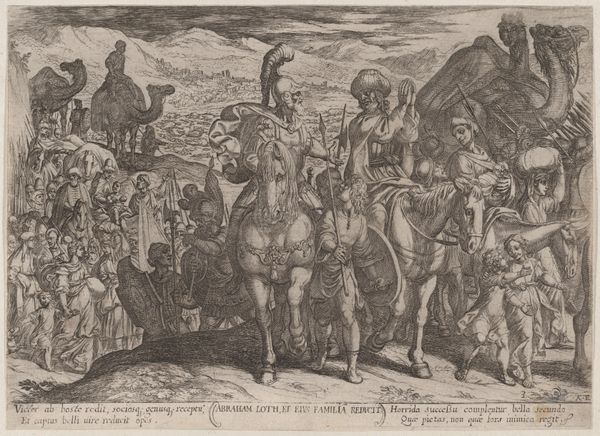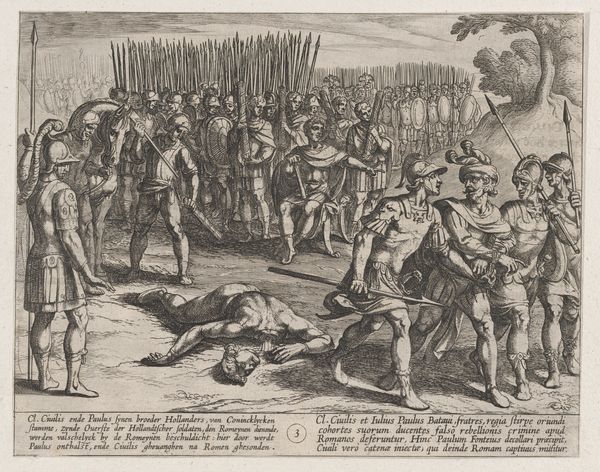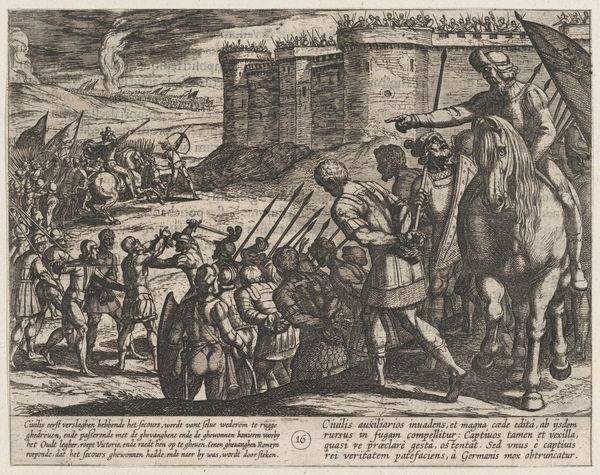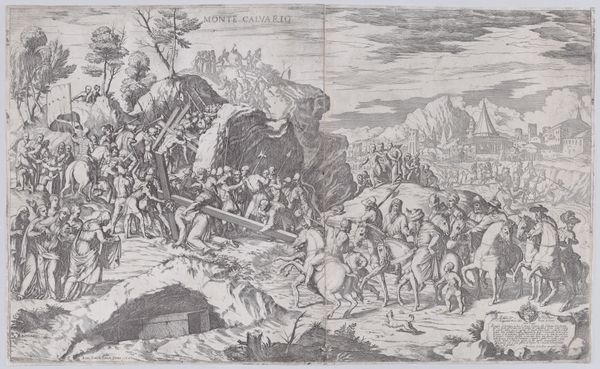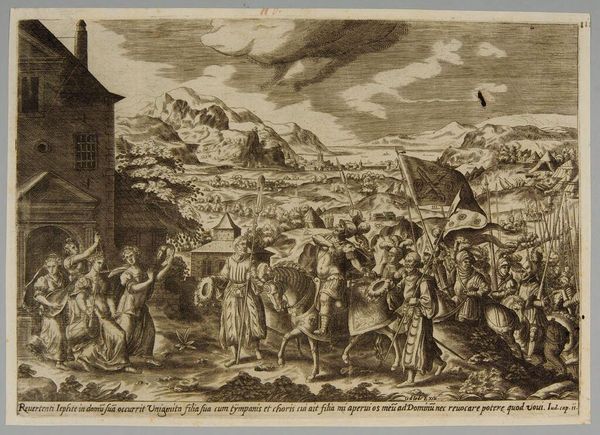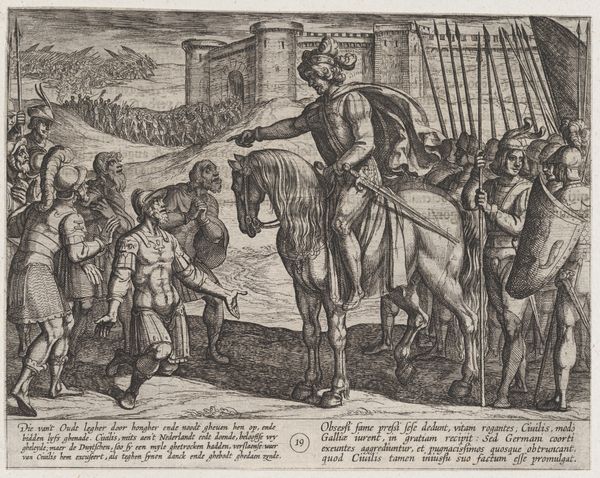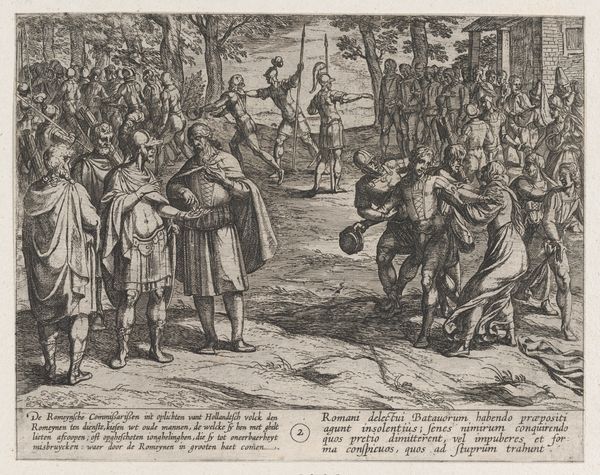
Plate 6: Romans Defeated Near the Rhine, from The War of the Romans Against the Batavians (Romanorvm et Batavorvm Societas) 1611 - 1612
0:00
0:00
drawing, print, engraving
#
drawing
#
baroque
# print
#
landscape
#
soldier
#
horse
#
history-painting
#
engraving
Dimensions: Sheet: 6 7/16 × 8 1/8 in. (16.4 × 20.7 cm)
Copyright: Public Domain
Editor: Here we have Antonio Tempesta's engraving from 1611-1612, "Romans Defeated Near the Rhine." It's a chaotic battle scene, filled with so many figures in a relatively small space. What historical narrative do you see being presented here, and how does the composition reinforce that? Curator: This print belongs to a series depicting the Batavian revolt against Roman rule. Tempesta, working in the Baroque style, utilizes a crowded composition to visually convey the intensity and upheaval of war, a common trope. The defeat of the Romans was a popular theme in the Netherlands, reflecting their own struggles for independence from Spain. Do you notice how the foreground emphasizes individual combat, while the background shows larger formations? Editor: I see that, almost like a microcosm/macrocosm situation. Was this series intended as mere historical documentation? Curator: Not necessarily "mere". These images circulated widely. Consider the context: The Dutch were actively constructing their national identity. Representing this earlier uprising against an empire served to legitimize their own contemporary rebellion and create a sense of shared history and destiny. It speaks to the public role of art, doesn’t it? These weren't just pretty pictures; they were potent political statements. Editor: So the print functions on multiple levels, as a battle scene but also a kind of propaganda. That’s fascinating how art can actively shape cultural narratives. Curator: Exactly. Reflect on how museums now contend with these complex layers, trying to present not just the "what" but the "why" and "how" of artistic production. Editor: I never considered prints as actively contributing to a national consciousness like this, more as straightforward historical records. I learned so much! Thanks! Curator: A pleasure! It's about appreciating art's dynamism; always engaging with the historical moment.
Comments
No comments
Be the first to comment and join the conversation on the ultimate creative platform.




